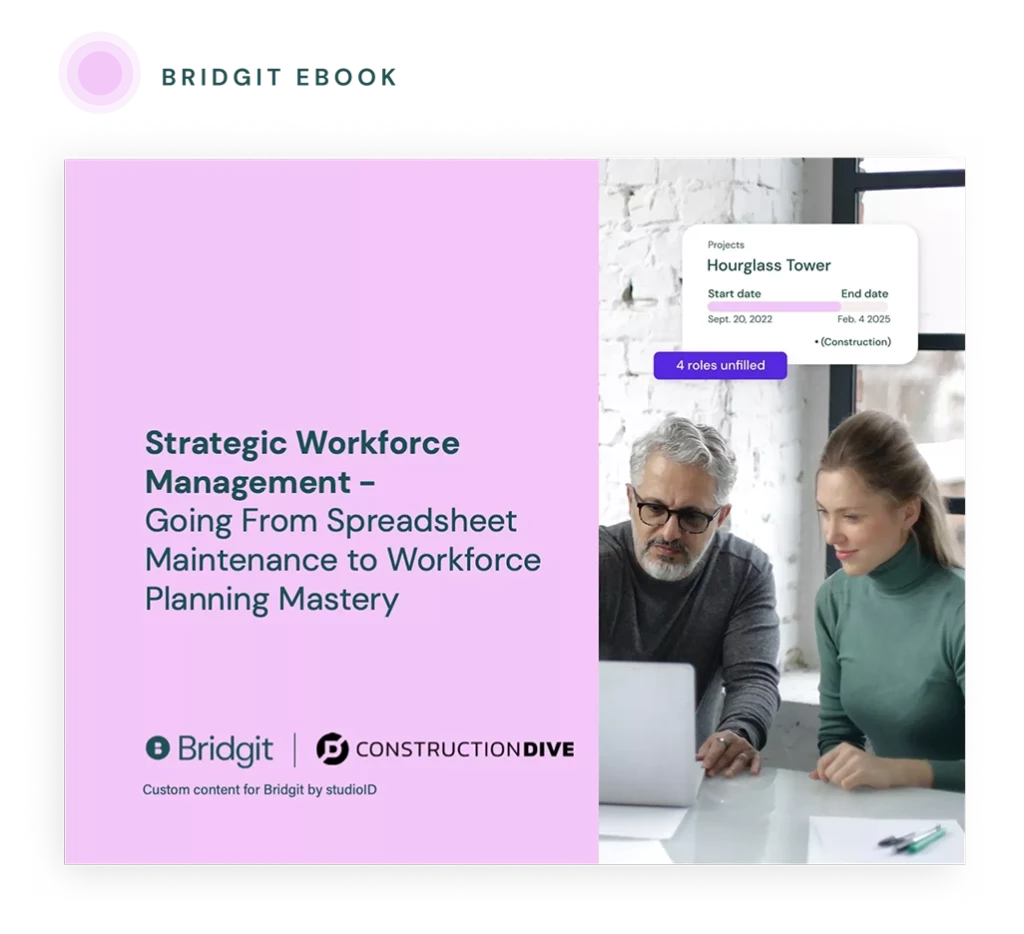Progressing your career as a construction professional could mean acquiring the right certifications to expand your knowledge and prove that you’re qualified to practice.
Table of Contents
A construction safety certificate indicates that you’re informed on various construction safety practices and that you know how to eliminate onsite hazards and reduce safety risks. This article will cover what you need to know about safety certificates for construction.
What is a construction safety certificate?
Possessing a construction safety certificate demonstrates your knowledge of construction safety practices. The term doesn’t describe just one certificate, though. Rather, there are many safety certificates you can obtain. Some are regional, whereas others are less dependent on location and more geared towards particular specializations.
Some of the most well-known safety certificates for construction in the United States are issued by the Occupational Safety and Health Administration (OSHA). Certifications you can receive from this government body include:
- concrete and masonry construction safety
- crane and rigging construction safety
- electrical safety
- welding and cutting safety
Many construction safety certifications offered by the Occupational Safety and Health Administration involve just one hour of coursework and cost just $20.
Other entities (including some private companies) also offer construction safety training and certificates.
Exploring the different types of construction safety certificates
Here are the different types of safety certificates you can obtain as a construction professional.
Generalized safety certifications
Generalized safety certifications focus on construction safety as a whole and may cover industrial uses. Some examples of this type of certification include:
- OSHA 10-Hour Construction Card (OSHA 10) – This 10-hour course is designed for entry-level workers looking for basic safety training in the prevention of workplace hazards, worker rights, filing complaints, and so on.
- Basic Safety Orientation for Construction – This orientation goes over common hazards encountered in the workplace (whether electrical, fire, chemical, etc.), as well as how workers can protect themselves.
Specialized safety certifications
Specialized construction safety certifications cover more specific safety topics and demonstrate expertise in particular areas of safety. Examples of this type of certification include:
- Excavation Safety in Construction – This course intended for workers in trenches specifically covers how to work safely when conducting excavations, being mindful of the risk of cave-ins, asphyxiation, falls, inhalation of fumes, and so on.
- Motor Vehicles – This course goes over what workers need to know about mechanized equipment, as well as the signs, signals, and barricades associated with operating such vehicles.

Looking to be more strategic with your people?
We partnered with Construction Dive to outline the steps any contractor can take to be more strategic with their workforce management.
Benefits of construction safety certificates
Construction safety training and certifications offer many benefits, both for individual workers and organizations. Here are a few noteworthy ones.
Improved company financials
Construction safety training has proven to be a valuable investment for construction companies.
According to National Safety Council data, work-related injuries cost companies $1,100 on average in 2019. The average cost jumped to $42,000 in cases where the injury required medical attention. There are also time costs associated with workplace injuries, with the National Safety Council estimating that the time lost due to workplace injuries in 2019 was over 70,000,000 days.
OSHA, meanwhile, estimates that every $1 construction companies spend on safety training translates into $4 saved elsewhere down the line.
It’s hard to beat returns like that, especially when you consider how affordable construction safety certifications often are.
Increased employee satisfaction and retention
Data from O.C. Tanner reveals that employee satisfaction increases by 154% in environments where workers feel safe. This is crucial in construction, an industry that tops the list of most dangerous industries, with the most workplace-related deaths on a year-by-year basis.
Employee retention is also a key consideration in construction given the industry’s ongoing skilled labor shortage.
Increased likelihood of being awarded certain projects
Many project owners and general contractors prefer firms with workers trained in construction safety, as this expertise typically leads to improved project outcomes and reduced risk.
Improved career prospects
Construction safety certificates are also highly beneficial to the individuals that obtain them. Some jobs list safety certificates as a prerequisite, barring those without training from holding those positions. Such jobs include:
- Occupational health and safety specialist
- Occupational health and safety inspector
- Occupational health practitioner
Because many safety certificates are standardized by virtue of being offered by regional and federal governments, they’re also highly transferable and convey benefits far beyond the context of one role.
A viable path into the industry without a formal education
For those looking to enter the construction industry without a formal education, construction safety certifications offer a valuable entry point. For starters, many safety certificates are accessible, costing relatively little money with little time investment to complete.
Improved personal safety
The benefits of receiving safety certificates in construction go beyond career and financial perks. Workers who receive safety training are also less likely to be injured on the job site, which is, of course, a desirable personal outcome.
Best practices for renewing construction safety certificates over time
The need to renew safety certifications can vary on a case-by-case basis. More comprehensive and costly programs like those offered by the American Society of Safety Professionals (ASP), for example, may require you to recertify every few years as industry safety standards change over time.
Most cards and certificates offered by OSHA (especially the ones that require relatively short learning periods) do not expire. However, it’s recommended to periodically refresh yourself and renew your training anyway on a yearly basis.
How to become a construction safety manager
Becoming a construction safety manager is one of the many career paths you can take after receiving construction safety certificates. Here’s an in-depth look at the steps involved in becoming a construction safety manager.
Step 1: Consider receiving a relevant degree
While you can enter the construction industry without a degree, many companies prefer candidates with post-secondary credentials. According to Indeed, construction safety managers can go one of several routes in this regard.
Some earn degrees in construction management, engineering, or a safety-related field. The site also states construction management degrees are particularly helpful since safety is typically part of the curriculum.
Step 2: Receive construction safety training and certificates
While a degree can be helpful on the path toward becoming a construction safety manager, your learning shouldn’t stop there. After all, safety regulations and occupational risks change constantly.
Specialized construction safety certifications, such as those offered by OSHA, are a great way to demonstrate your expertise and interest in construction safety. If you’re primarily interested in becoming a safety professional within a particular niche of construction, consider finding specialized training and certifications.
Step 3: Build work experience
Building experience on job sites is key if you want to become a construction safety manager. Many organizations won’t hire you in that role without practical experience in non-safety roles.
Step 4: Receive additional certifications
Construction safety certifications offered by OSHA aren’t the only certifications you’ll need to become a construction safety manager. The Board of Certified Safety Professionals also offers certifications that can help you obtain higher-paying work in the field of construction safety.
To become a Certified Safety Professional, you must have a degree and experience in construction safety roles (hence the value of receiving more accessible certifications that will allow you to land those entry-level jobs).
Key skills required for success as a construction safety manager
Becoming a construction safety manager requires more than just getting the right construction safety manager certification. You’ll also need the right set of skills to be successful, including the following:
- Problem-solving – Safety-related issues are bound to crop up in the middle of projects. For this reason, construction safety managers should possess problem-solving skills to quickly and effectively resolve potential issues.
- Attention to detail – An eye for detail is crucial when overseeing construction safety and can be the difference between overlooking or correctly identifying potential hazards before an accident occurs.
- Communication – Communication skills are a must for most jobs, but it’s especially important for construction safety managers who must correspond with multiple parties on a project to ensure the resolution of safety-related problems.
The role of construction safety managers in ensuring a safe work environment
So what are construction safety managers actually responsible for? What do construction safety certificates teach that allows safety managers to ensure a safe work environment?
Safety managers are responsible for ensuring compliance with industry and government safety regulations. They enforce guidelines and carry out audits that see that construction sites are equipped with the right signage and that workers are using the right safety gear.
They must also prepare and explain to workers safety plans, making sure that workers are provided with the right safety training.
The impact of digital technologies on construction safety management
Construction safety management has become significantly easier with digital technologies.
Technology has allowed construction professionals to more effectively identify and prevent safety risks, respond to hazards as they occur on site, and ensure that workforces are properly trained to deal with safety-related issues.
Whether it’s by improving communication regarding safety standards, ensuring productivity to adhere to safety timelines, providing safer building alternatives with better resource allocation, or monitoring construction safety certifications, various technological platforms have allowed for more secure working environments.
Construction Estimating Software FAQ
What is digital construction estimating software?
Construction estimating software is used by estimating teams to calculate and predict costs for a construction project. These digital tools help streamline the estimation process from bid creation to cost analysis to ensure proposals are as precise as possible and help put forward successful bids. Getting estimates right up front is a key part of managing project scope creep in construction.
How does construction estimating software work?
Construction estimating software works by allowing users to input project details and then use built-in databases to forecast expenses. Advanced estimating software may use algorithms and machine learning to help forecast expenses. It’s important that when you evaluate your construction estimating software, you consider how it integrates with your process. You will want to pull in data from tools, like your CRM and workforce planning software, as well as information from project documents.
What is estimating in construction?
Estimating in construction involves calculating the costs for a project including items like materials, wages, equipment, and real-estate costs. Forecasting line-by-line expenses accurately is key to creating successful bids that win contracts and also ensuring your project is profitable. Estimating is an important skill in construction, as it’s a balance act between what you think will happen and what will happen.
Ensure better safety management with Bridgit Bench
Bridgit Bench is among the leading construction resource management applications in North America. With it, construction management professionals can better keep tabs on personnel and resources, such as equipment to ensure productivity and safety. Bridgit Bench also allows you to track safety certifications to ensure workers are qualified.
Click here to learn more about how Bridgit Bench enables the creation and maintenance of human resource databases. We hope this guide has helped you understand the value and importance of construction safety certificates.
Request a demo with Bridgit today.


